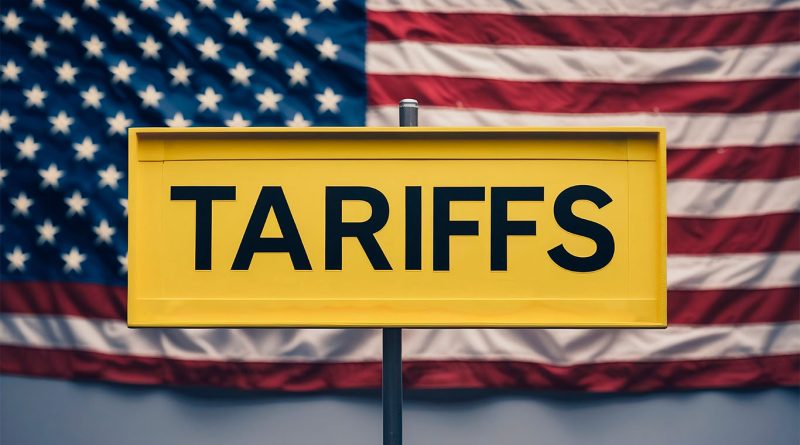Trump’s tariffs trigger global tension and economic uncertainty
In a move that has ignited both applause and alarm across global markets, President Donald Trump announced a sweeping tariff policy designed to reshape the contours of U.S. trade. The centerpiece of the plan is a universal 10 percent tariff on all imports, alongside much steeper rates on goods from approximately 60 countries, including economic powerhouses like China and Japan. Imports from China are now subject to a 34 percent tariff, Japan faces a 24 percent levy, while the European Union is hit with a 20 percent tariff.
Trump justified the action by citing the United States’ $1.2 trillion trade deficit, which he described as a “national humiliation.” According to him, the tariff revenue will be used to offset tax reductions and reduce national debt, a dual-purpose strategy intended to bolster economic sovereignty. During a televised announcement, Trump claimed the policy would deliver “the strongest era of American manufacturing since the Second World War.”
The announcement signals a clear shift in U.S. economic policy. Rather than negotiating multilateral trade agreements or investing in regional partnerships, the Trump administration is relying heavily on protectionist tools. Supporters argue that this could help rebuild industries that have long struggled against cheaper imports, while critics warn of a diminished role for the U.S. in global trade leadership.
The tariffs were framed as both an economic and strategic response. “Reciprocity” was the core message, with Trump insisting that trading partners must be held accountable for what he called “predatory trade practices.” Although details remain limited, the administration’s stance leaves little doubt that a more aggressive approach is now in motion.
U.S. manufacturers face uncertain gains from protectionist measures
Initial reactions from U.S. manufacturers have been mixed. Some see the tariffs as a long-overdue effort to create fairer competition. Others remain cautious, particularly those that depend on globally integrated supply chains. While steel and aluminum producers have generally welcomed the policy, sectors such as automotive and electronics are raising concerns about increased material costs and potential foreign retaliation.
Manufacturers that import key components may see rising expenses that cancel out the advantages of reduced competition. Smaller firms that rely on global sourcing while selling to domestic markets are also reassessing their pricing strategies.
In theory, the new tariffs could boost demand for U.S.-made goods by making imported alternatives more expensive. But capitalizing on this shift requires more than policy changes. Upgrading facilities, training workers, and expanding output all demand time and investment that may not align with the immediate effects of the tariffs.
Some executives are waiting to see whether demand rises before committing to changes. Others worry that retaliatory tariffs could undercut their own exports or drive up input costs, creating a zero-sum scenario rather than a path to industrial revival.
Inflation and consumer price spikes threaten domestic purchasing power
One of the most immediate consequences of the new tariffs is a projected rise in consumer prices. Economists have cautioned that across-the-board tariffs on imports, particularly for everyday goods like electronics and clothing, could push inflation above 4 percent.
Retailers are beginning to adjust in anticipation. Industries such as electronics and automotive, which rely heavily on foreign-made parts, are likely to adjust prices before the next earnings cycle.
The effects will not stop at retail. Higher costs for raw materials and intermediate goods may ripple through to construction, agriculture, and healthcare. Without corresponding wage growth, household purchasing power will be further squeezed.
Political consequences may follow. While the tariffs may satisfy voters who favor an assertive trade stance, inflation could drive backlash among more price-sensitive demographics. The policy’s success will depend on whether perceived industrial gains outweigh everyday financial strain for consumers.
Global allies and rivals prepare retaliatory economic actions
The international response has been swift. China, Canada, and the European Union have all indicated plans for retaliatory tariffs targeting U.S. exports. Likely areas include agriculture, aerospace, and high-tech components.
The European Commission has begun drafting tariffs on U.S.-made goods. China is evaluating responses against soybeans, electric vehicles, and semiconductors. Canada has raised concerns about the future of the U.S.-Mexico-Canada Agreement and could revisit existing terms.
The breadth of this response has sparked concerns about a broader trade conflict. Economists recall the U.S.-China trade standoff from 2018 to 2019, which disrupted global supply chains and slowed growth. The current plan, which affects more countries and a wider range of goods, poses an even greater risk.
Businesses with cross-border operations are already reassessing sourcing strategies and inventory models. Some are exploring nearshoring or onshoring options, but restructuring global operations cannot happen quickly.
Financial markets react sharply as investors brace for volatility
Market reaction was immediate. The S&P 500 fell sharply following the announcement, reflecting widespread concern about economic disruption. Tech firms and retailers with global exposure were particularly hard hit.
Investors began reallocating capital into lower-risk assets. Treasury yields dipped, and financial institutions began updating forecasts and risk assessments. Sectors like logistics and transportation saw increased volatility, while industrial automation firms with domestic footprints gained short-term attention.
Private equity and hedge funds are watching closely. The uncertainty is prompting a revaluation of holdings across industries sensitive to price volatility, trade exposure, and regulatory risk. Long-term planning now includes scenarios where international trade becomes more fragmented and less predictable.
Even if some domestic sectors benefit from increased demand, overall investment appetite may weaken in an environment shaped by policy shifts and international retaliation. Market sentiment remains fragile.
Beyond the balance sheets and market indexes, the tariff policy is a defining issue in the 2025 political arena. Long-standing alliances based on mutual trade benefit are now being tested. The plan may lead to more onshoring and innovation, but it will also demand serious investment in infrastructure, education, and workforce readiness. Whether this bold strategy strengthens U.S. manufacturing or triggers a broader realignment in global trade, it is certain to define the economic narrative of the coming year.
Sources:
BBC
Business Insider
Associated Press News
